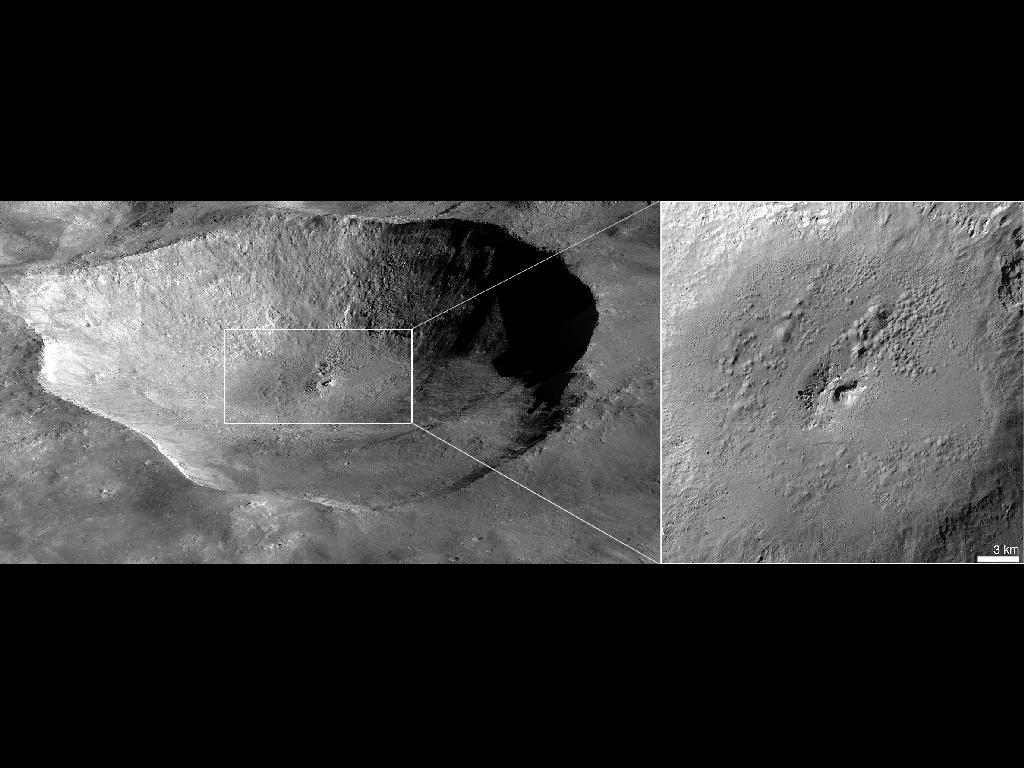The volatiles were released from minerals likely containing water. Pothole-like features mark some of the asteroid’s surface where the volatiles boiled off. Dawn did not find actual water ice at Vesta. However, it found evidence of hydrated minerals delivered by meteorites and dust in the giant asteroid’s chemistry and geology.
One paper, led by Thomas Prettyman, the lead scientist for Dawn’s Gamma Ray and Neutron Detector (GRaND) at the Planetary Science Institute in Tucson, Arizona, describes how the instrument found signatures of hydrogen, likely in the form of hydroxyl or water bound to minerals in Vesta’s surface.
“The source of the hydrogen within Vesta’s surface appears to be hydrated minerals delivered by carbon-rich space rocks that collided with Vesta at speeds slow enough to preserve their volatile content,” said Prettyman.
A complementary paper, led by Brett Denevi, a Dawn participating scientist at the Johns Hopkins University Applied Physics Laboratory in Laurel, Maryland, describes the presence of pitted terrain created by the release of the volatiles.
Vesta is the second most massive member of our solar system’s main asteroid belt. Dawn was orbiting at an average altitude of about 130 miles (210 kilometers) above the surface when it obtained the data. Dawn left Vesta on September 5 and is on its way to a second target, the dwarf planet Ceres.
Scientists thought it might be possible for water ice to survive near the surface around the giant asteroid’s poles. Unlike Earth’s moon, however, Vesta has no permanently shadowed polar regions where ice might survive. The strongest signature for hydrogen in the latest data came from regions near the equator, where water ice is not stable.
In some cases, space rocks crashed into these deposits at high speed. The heat from the collisions converted the hydrogen bound to the minerals into water, which evaporated. Escaping water left holes as much as 0.6 mile (1km) wide and as deep as 700 feet (200 meters). Seen in images from Dawn’s framing camera, this pitted terrain is best preserved in sections of Marcia Crater.
“The pits look just like features seen on Mars, and while water was common on Mars, it was totally unexpected on Vesta in these high abundances,” said Denevi. “These results provide evidence that not only were hydrated materials present, but they played an important role in shaping the asteroid’s geology and the surface we see today.”
GRaND’s data are the first direct measurements describing the elemental composition of Vesta’s surface. Dawn’s elemental investigation by the instrument determined the ratios of iron to oxygen and iron to silicon in the surface materials. The new findings solidly confirm the connection between Vesta and a class of meteorites found on Earth called the Howardite, Eucrite, and Diogenite meteorites, which have the same ratios for these elements. In addition, more volatile-rich fragments of other objects have been identified in these meteorites, which supports the idea the volatile-rich material was deposited on Vesta.










